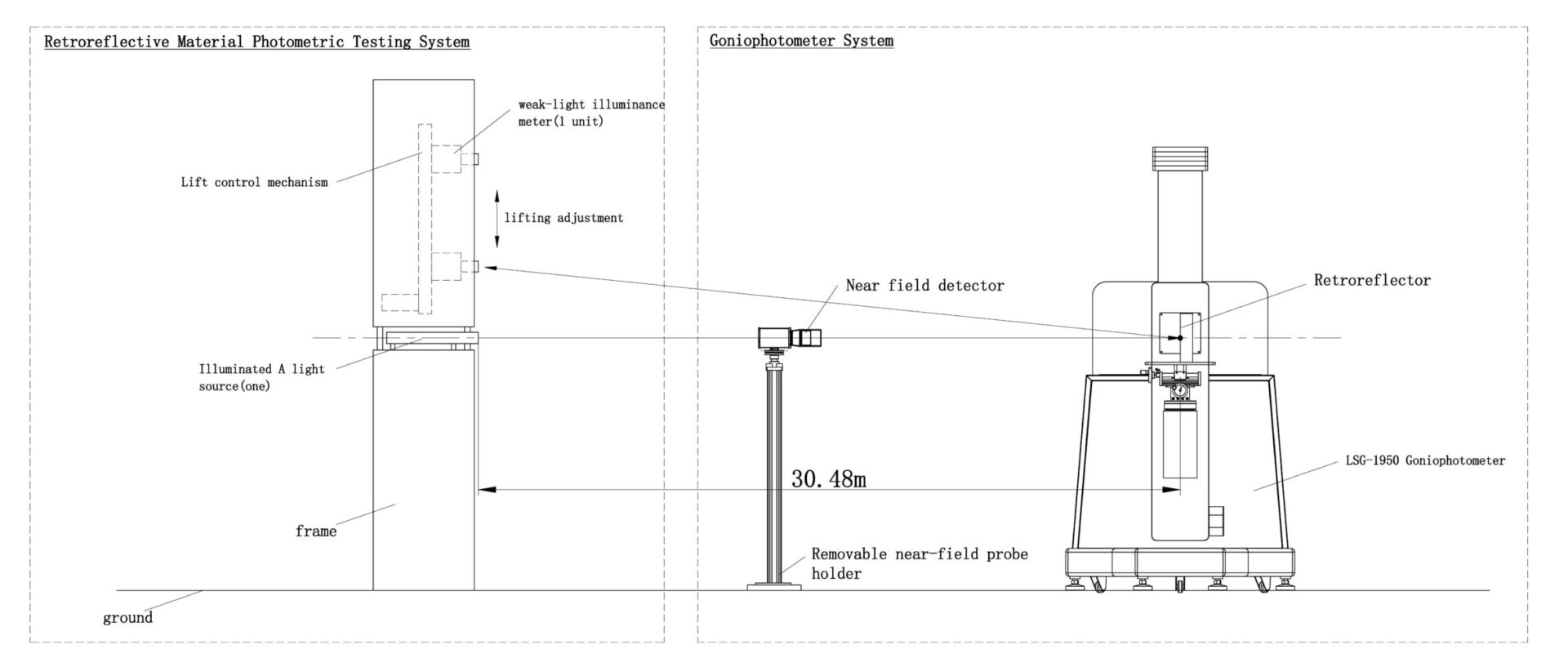Product No: LSG-1950
LSG-1950 is a goniophotometer recommended by CIE A-α, mainly used to measure lamps in the transportation industry, such as traffic lights, special lamps for cars, buses, trains, ships, aerospace equipment, etc. When the test sample rotates around the horizontal and vertical axes, the photometer probe remains stationary and faces the object to be tested, so as to test the light intensity and illumination value of the lamp under test.
Standard:
ECE-R65 “Special Warning Lights”
FMVSS108 “Lamps, re-flective devices, and associated equipment. “
IEC60662(GB13954 ) “High-pressure sodium vapour lamps”
GB 25991 “Automotive headlamps with LED light sources and/or LED modules”
Specification:
• A-α axis rotation angle is -180~180°
• Angle accuracy: 0.01° (LSG-1950), angle resolution: 0.001°
• Photometer probe accuracy: CIE Class A (Class L: optional)
• Test accuracy: 2% (under standard light source); stray light: less than 0.1%
• Chinese and English software can run under Win7, Win8 and Win10, Win11

LSG-1950 Test Size and Weight
Option 1: PM400F Flashlight Photometer to work with LSG-1950 Goniophotometer to meet the following standards:
• MH/T 6012-1999 – Aviation Obstruction Light
• HB6490-1991 – General Specifications for Aircraft Navigation Light and Anti-collision Light
• JTT 761—2022 – General Technical Conditions for Aids to Navigation Light
• ECE R65 Uniform Provisions Concerning The Approval of Special Warning Lamps for Motor Vehicles
• SAE J595 Directional Flashing Optical Warning Devices for Authorized Emergency, Maintenance, and Service Vehicles
• SAE J845 Optical Warning Devices for Authorized Emergency, Maintenance, and Service Vehicles
• JJF1330-2011 – Calibration Specification for Transient Effective Luminous Intensity Meter.
Option 2: LS-RF200 Retroreflective Material Photometric Testing System to work with LSG-1950 Goniophotometer:
The LS-RF200 Retroreflective Material Photometric Testing System is mainly composed of an illuminated A light source, weak-light illuminance meter, lifting adjustment system, and a control box. It is used in conjunction with LISUN’s LSG-1950 goniophotometer turntable to test the photometric performance of various retroreflectors or materials such as raised road signs, faulty vehicle warning signs, road marking paint, and contour markers, and fully meets the requirements of relevant domestic and international standards such as GB, ECE, SAE, DIN, and FMV.

LS-RF200 Retroreflective Material Photometric Testing System and LSG-1950 Goniophotometers
How to test Automotive LED Headlights?
According to IEC, EN, ECE, SAE, FMVSS108 federal regulations and relevant test standards, automotive LED lights is required to test optical characteristics, including the spatial distribution and total flux of luminous intensity (cd), spectral characteristics, chromaticity coordinates, dominant wavelength, luminance (cd / m2), color temperature etc parameters.
To obtain these data, we mainly use goniophotometer to test. According to CIE and FMVSS108 standards, LISUN recommend LSG-1950/LSG-1950S CIE A-α Goniophotometer. It mainly for measuring transportation industry lighting, such as traffic lights, buses, trains, ships and aerospace equipment lamps.
What are optical test parameters and standards of Automobile Headlights?
With the rapid development of the automobile industry and the improvement of driving speed, the automobile headlights are very important to ensure driving safety, the standards of automobile headlights occupies a very important position in automobile standards. At present, the standards applicable to automotive headlight products include ECE R112, SAE J1383, FMVSS108, GB 4599-2007, GB21259-2007, GB25991-2010, etc. These standards are applicable to automobile headlights with different light sources, but they also made uniform regulations for the entire lamp technical requirements, such as general requirements, color, luminous intensity distribution and test methods, and stability of luminous intensity distribution, etc.
LISUN LSG-1950 Goniophotometer for Automotive and Signal Lamps – After-sales Frequently Asked Questions (FAQ)
LISUN LSG-1950 Goniophotometer for Automotive and Signal Lamps were in the market for more than 10 years, LISUN engineers service team already summary the most of the After Sales Questions and Answers in the above link. Please read it carefuly, you can solve the most of the problems by yourself if you have some questions while using the instruments. LISUN will be continue to update this pages and more FAQ can be found in this topic link.
